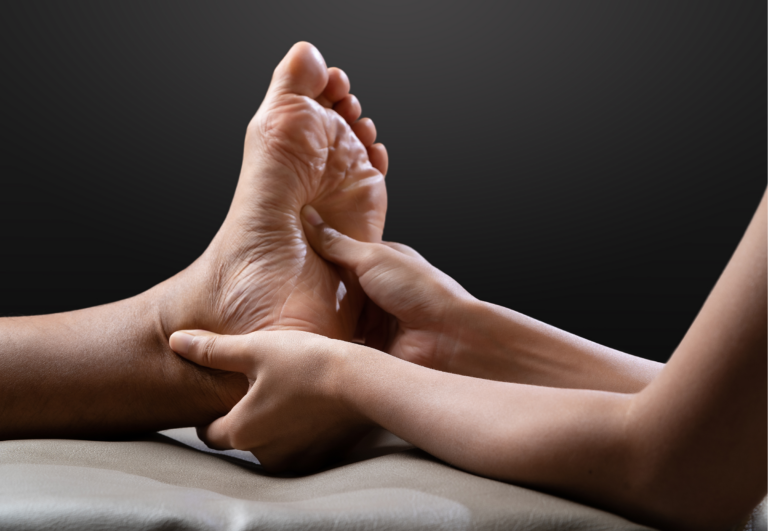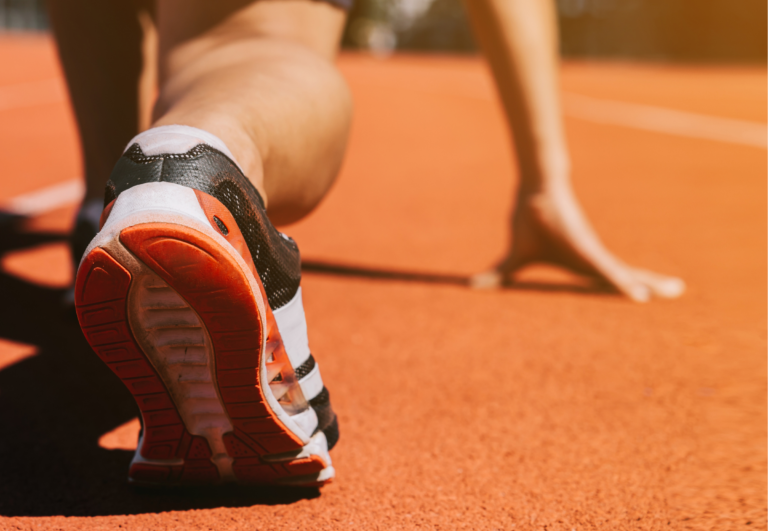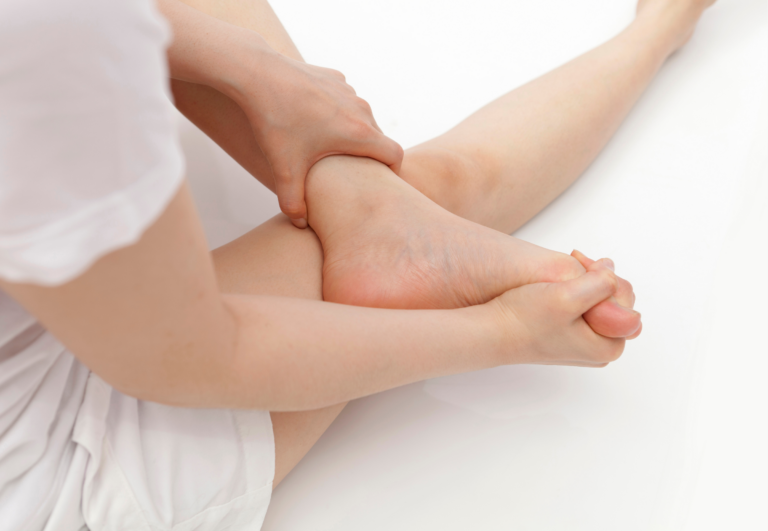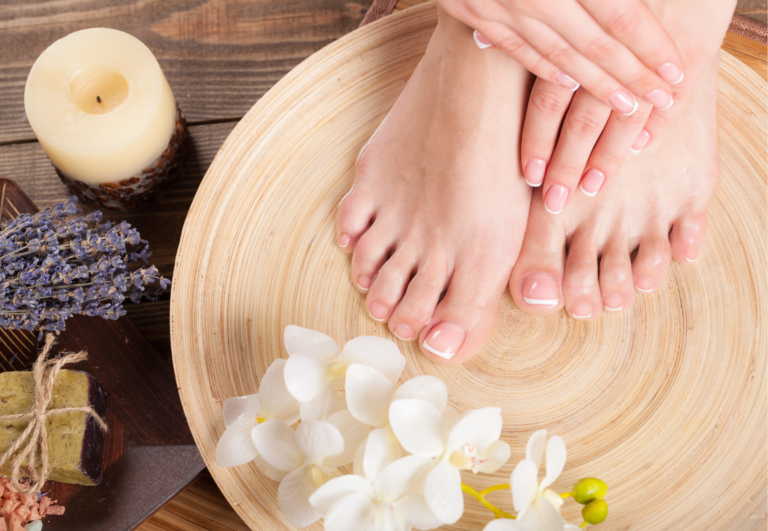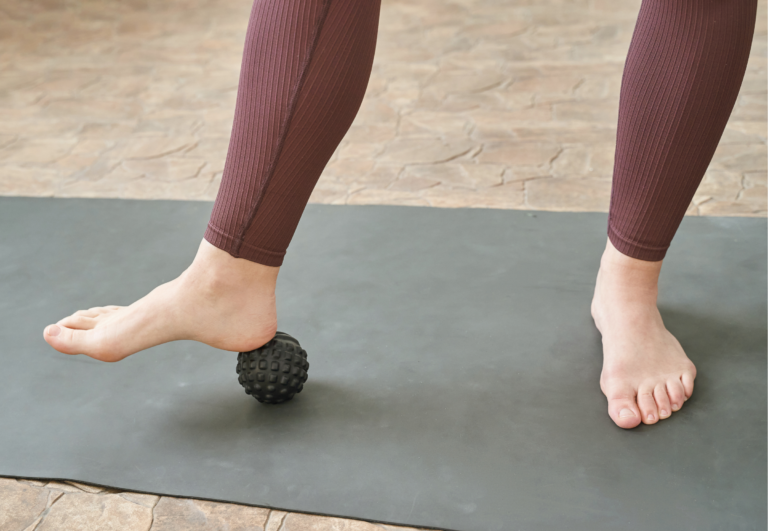Toe Spacing Techniques: Optimize Foot Health and Athletic Performance
Toe spacing is a simple yet effective method I’ve found useful in promoting foot health and comfort. This technique primarily involves the use of toe separators or spacers, which are designed to realign crowded or overlapping toes. From personal experience and widespread reports, consistent use can help alleviate pain and prevent numerous podiatric conditions such as bunions, corns, calluses, and blisters.
Incorporating toe separators into your daily routine can be beneficial for those with foot deformities like hammertoes, and they can also assist in improving toe alignment and promoting better balance. As someone who practices toe spacing, I’ve noticed an enhancement in my overall foot comfort, especially during long periods of standing or walking, and I’ve gathered that the same experience resonates with many others. It’s important to understand that while toe spacing is valuable for foot health, it’s not an exhaustive treatment and should be paired with proper foot care habits.
Most Helpful Toe Spacing Techniques
Toe spacing techniques can be very beneficial for improving foot health, especially for those with foot conditions such as bunions, hammertoes, or general toe crowding.
Here are some of the most helpful toe spacing techniques:
- Toe Spacers or Separators:
- These are devices made from silicone, gel, or other soft materials that you place between your toes to gently push them apart.
- They can be worn throughout the day or during specific activities to encourage proper toe alignment.
- Manual Toe Stretching:
- Use your fingers to gently spread your toes apart.
- Hold the stretch for a few seconds before releasing.
- Repeat several times to increase flexibility and space between the toes.
- Toe Splay Exercises:
- Without using your hands, try to spread your toes apart as far as you can and hold for a few seconds.
- Relax and then repeat the exercise to strengthen the muscles that control toe splay.
- Yoga and Pilates:
- Certain yoga and Pilates exercises encourage you to spread your toes and engage your foot muscles, which can naturally improve toe spacing.
- Poses like Mountain Pose (Tadasana) and Downward-Facing Dog (Adho Mukha Svanasana) are particularly good for this.
- Toe Socks:
- Toe socks, which have individual compartments for each toe, can encourage toe separation and may be a more comfortable alternative to toe spacers for some people.
- Barefoot Activities:
- Walking barefoot on natural surfaces like grass, sand, or soil allows your toes to spread naturally and can strengthen the intrinsic muscles of the foot.
- Footwear with a Wide Toe Box:
- Choosing shoes that provide ample room for the toes to spread can help maintain proper toe alignment and spacing throughout the day.
- Toe Gripping Exercises:
- Place small objects like marbles or a towel on the floor and use your toes to pick them up or scrunch the towel, which can help strengthen the muscles between the toes.
- Toe Writing:
- With your foot slightly elevated, use your big toe to “write” letters or numbers in the air, which can enhance toe mobility and spacing.
Incorporating these techniques into your daily routine can help improve toe alignment, enhance foot function, and potentially alleviate discomfort associated with cramped or misaligned toes.
It’s important to start slowly and increase the intensity or duration of the exercises gradually to prevent overexertion. If you have a specific foot condition or experience pain while doing these exercises, it’s advisable to consult with a healthcare professional before continuing.
Fundamentals of Toe Spacing
As someone who regularly uses toe spacers, I understand the importance of toe spacing for maintaining foot health. Ensuring proper toe alignment is key to both comfort and functionality.
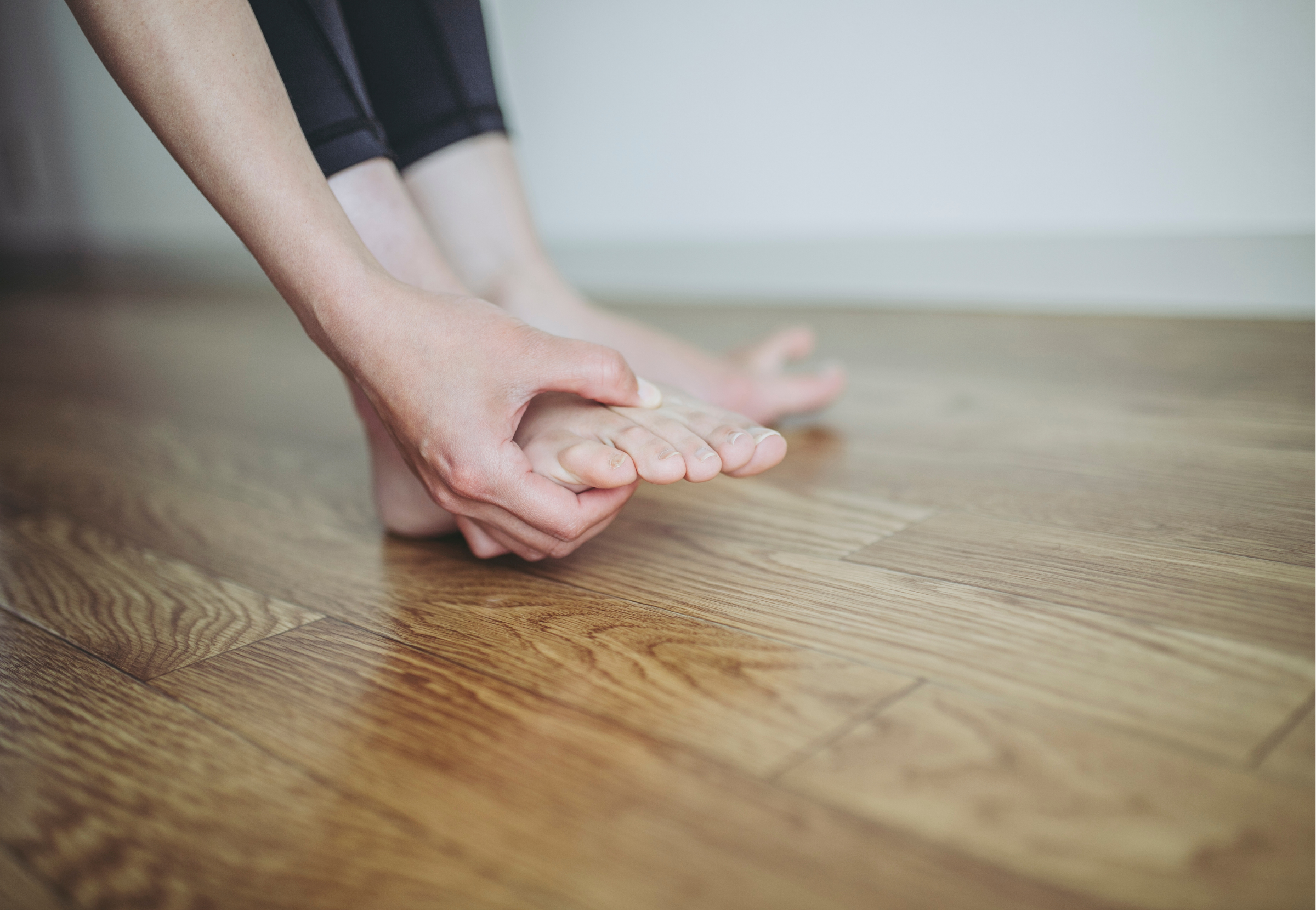
Human Foot Anatomy
The human foot consists of 26 bones, more than 30 joints, and a network of muscles, tendons, and ligaments. Toes, particularly, play a crucial role in balance and stability. The big toe, or hallux, bears much of the body’s weight when walking, while the other toes assist in distributing weight evenly across the foot. When toes are properly spaced, they help maintain the foot’s natural structure and function.
Benefits of Proper Toe Alignment
Proper toe alignment can significantly improve foot strength and overall foot health. Benefits include:
- Reduced risk of common foot ailments: Properly aligned toes can prevent issues such as blisters, corns, calluses, and bunions.
- Increased balance and stability: Spacing your toes can enhance your balance, giving you a more stable and stronger foundation.
- Improved foot function: Natural toe alignment allows for better movement mechanics during walking or running, reducing stress on the feet.
By focusing on proper toe spacing and alignment, you’re taking a step towards healthier feet and a more comfortable experience whether you’re standing still or on the move.
Toe Spacing Techniques and Devices
Toe spacing is an essential practice for maintaining foot health, addressing issues like bunions and corns through improved toe alignment. Using toe spacers can enhance comfort and prevent common foot problems.
Types of Toe Spacers
Toe spacers come in various forms, each with its own specific use-case. Awesome Toes, for example, are designed to be worn during the day in spacious footwear or at night, assisting with toe alignment and spacing. Another popular variant, toe spreaders, typically serve a similar function but might differ slightly in design, often being a bit bulkier and used for shorter durations, such as during yoga or at-home relaxation.
Common types of toe spacers:
- Toe separators: Soft devices sitting between toes, preventing rubbing.
- Toe stretchers: Designed to stretch and realign toes, often used during activities.
- Single-toe spacers: Focus on individual toe issues, like overlapping toes.
Material Considerations
The materials used in toe spacers are critical for comfort and effectiveness. Medical-grade silicone is a favored choice due to its durability, flexibility, and hypoallergenic properties.
Gel-based spacers are another option, often softer and providing a cushion-like feel, but they may not offer the same level of correction as silicone-based products.
Preferred materials for toe spacers:
- Silicone: Durable, hypoallergenic, and offers good toe separation.
- Gel: Provides cushioning but might offer less corrective support.

Correct Toes and Alternatives
Correct Toes toe spacers, the first of their kind, were designed by Dr. Ray McClanahan. These are made of medical-grade silicone and are considered a benchmark for design and function in the toe spacing device market.
They inspire a natural toe splay, which can be especially beneficial while walking or running. For individuals seeking alternatives, products similar in design but varying in materials and price points are available, ensuring that there is a toe spacing solution for everyone.
Popular toe spacer options:
- Correct Toes: Pioneered design for natural toe alignment.
- Silicon-based alternatives: Comparable in function to Correct Toes with minor design variations.
- Budget-friendly spacers: Less expensive options for those seeking basic toe separation benefits.
Addressing Common Foot Conditions
Using toe spacers can be a practical approach to addressing various common foot conditions. These devices can align toes to their natural position, providing relief from discomfort and preventing further deformities. Let’s explore how they can be used specifically for bunion management, hammertoes, and the consequences of conventional footwear.
Bunion Management with Spacers
Bunions, or hallux valgus, are bony bumps that form at the base of the big toe, often caused by tight shoes and misaligned toes. In my experience, toe spacers can be a simple yet effective solution to help realign the big toe and alleviate pressure. They work by creating the necessary space between the big toe and the second toe, which can reduce the risk of bunions worsening over time.
- Technique: Position the toe spacer comfortably but firmly between the big toe and the second toe.
- Duration: Wear for short periods initially, slowly increasing as comfort allows.
Preventing and Treating Hammertoes
Hammertoes, characterized by a bent shape of one or more toes, often result from tight footwear and muscle imbalance. Toe spacers can play a crucial role in treating and preventing hammertoes. By maintaining proper toe alignment, spacers reduce the muscle strain that causes toes to curl.
- Regular Use: Incorporate toe spacers into your daily routine to counteract the toe-curling tendency.
- Consistency: Consistent use is key to obtaining results, as correcting toe deformity is a gradual process.
Consequences of Conventional Footwear
Conventional footwear, especially those with narrow toe boxes and high heels, can lead to an array of foot problems, such as corns, flat feet, and plantar fasciitis. Toe spacers are a preventative measure that can help maintain healthy toe alignment and mitigate these issues.
- Selection: Choose shoes with a wide toe box to accommodate toe spacers and allow for natural toe spread.
- Mindfulness: Be mindful of the proper fit to support foot health and complement the benefits of toe spacers.
Improving Mobility and Performance
Toe spacing techniques can significantly enhance foot comfort, mobility, and athletic performance. Proper spacing improves range of motion and stability, vital for activities such as running, yoga, and tai chi.
Toe Spacing for Athletes
Athletes across various sports can experience improvements in performance by incorporating toe spacers into their routines. Running with toe spacers, for example, allows for a more natural toe splay, enhancing balance and potentially reducing injury risk. In my experience, regular use during training can lead to a noticeable difference in agility and foot strength.
- Key benefits for athletes:
- Enhanced foot mobility and strength
- Improved balance and proprioception
- Reduced risk of toe-related injuries
Balance and Stability in Movement
My use of toe spacers has shown benefits for everyday activities as well, like walking and dynamic movements. They encourage proper foot alignment, which is essential for balance and stability. This realignment can be particularly beneficial in practices like yoga, tai chi, and qigong, where foot posture is crucial.
- Exercises for balance and stability:
- Toe spreading and squeezing: improves toe dexterity
- Single-leg balances: heightens foot and ankle stability
- Yoga poses focusing on foot alignment: reinforces overall balance
Exercise and Stretching Routines
Incorporating toe spacers into exercise and stretching routines facilitates greater range of motion in the toes and feet, fostering better overall foot health. As someone who practices yoga regularly, I’ve found that toe spacers can be a helpful addition during poses that stress foot strength and alignment, enhancing the stretching experience and leading to more profound poses.
- Stretching routine with toe spacers:
- Begin with gentle toe and ankle circles
- Progress to static holds in balanced yoga postures
- Finish with a series of dynamic stretches targeting the lower legs and feet
Considerations for Specific Populations
When exploring toe spacing techniques, it’s crucial to consider the specific needs of children, older adults, and individuals with active lifestyles. Age, level of activity, and choice of footwear all play a vital role in determining the best approach.
Toe Spacing for Children and Aging Adults
Children’s feet are constantly growing and shaping, necessitating room for their toes to spread naturally. This promotes proper walking patterns and overall foot health. Similarly, older adults require attention to toe spacing to maintain balance and prevent falls. Supportive footwear with a wide toe box can help accommodate the natural spread of toes, which is especially beneficial during activities like walking or standing.
- Children: Look for shoes that allow for natural toe spread; avoid narrow toe boxes.
- Older Adults: Opt for footwear promoting balance; wide toe boxes are helpful.
Footwear Choices for Varied Lifestyles
The right footwear is paramount for anyone engaging in specific activities. Athletes, hikers, and people who stand for extended periods must ensure their shoes provide ample room for toe movement.
- Athletes: Need shoes that offer both stability and space to prevent toe issues.
- Hiking: Requires sturdy footwear that also has a wide toe box for comfort on uneven terrain.
- Standing Jobs: Shoes with wide toe boxes and cushioning are essential for those on their feet all day.
Selecting proper footwear with sufficient space for toe spreading can make a significant difference in comfort and foot health across different population segments and lifestyles.
